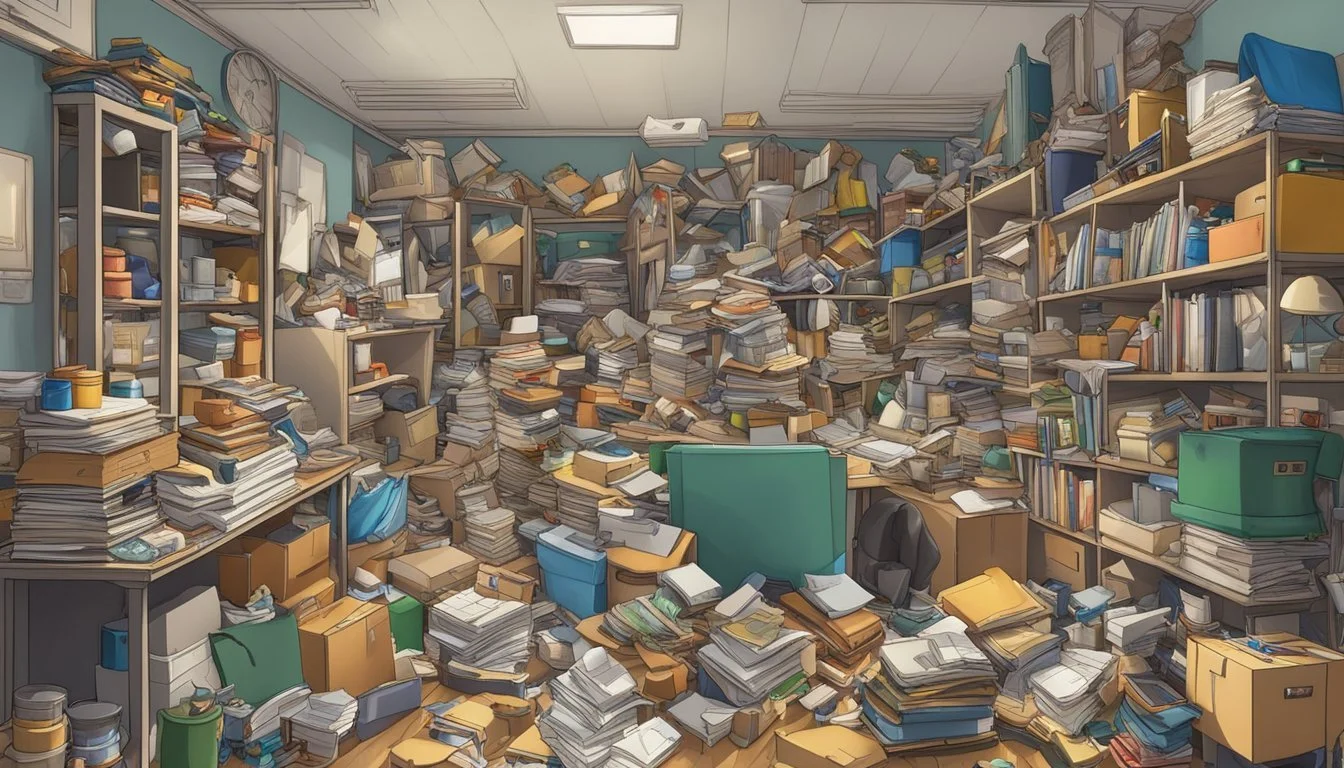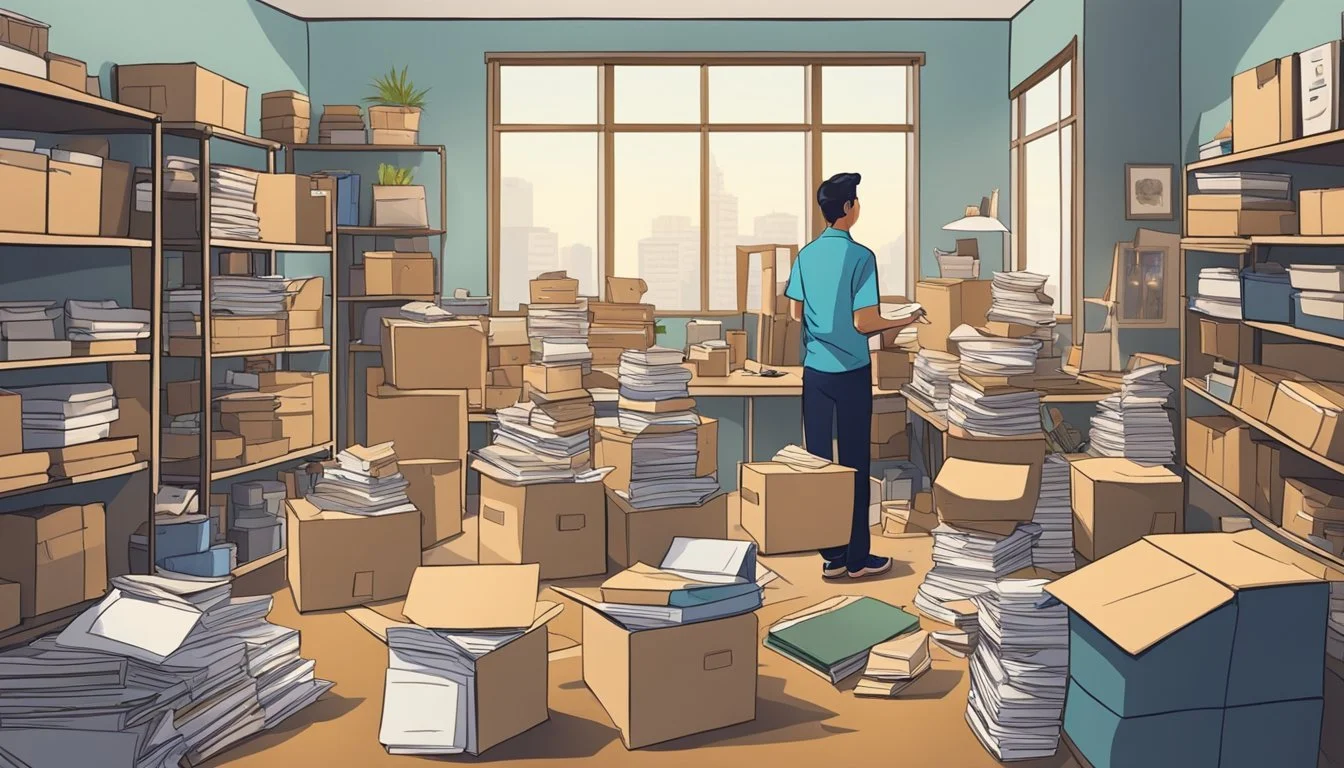Words of Insight: Powerful Hoarding Disorder Quotes That Inspire Understanding
Hoarding disorder quotes offer insight into a complex mental health condition that affects millions worldwide. These quotes provide a glimpse into the minds of those struggling with excessive accumulation of possessions and the inability to discard them. Hoarding disorder quotes can serve as a powerful tool for raising awareness, fostering empathy, and encouraging those affected to seek help.
Many notable figures have shared their thoughts on hoarding, shedding light on its psychological and emotional aspects. From mental health professionals to individuals who have experienced hoarding firsthand, these quotes capture the challenges and potential for change associated with the disorder. They highlight the importance of understanding, compassion, and support in addressing hoarding behaviors.
Exploring hoarding disorder quotes can be enlightening for both those directly affected and those seeking to understand this condition better. These quotes often touch on themes of attachment, fear of loss, and the struggle to let go, providing valuable perspectives on the complex nature of hoarding disorder.
Understanding Hoarding Disorder
Hoarding disorder is a complex mental health condition characterized by persistent difficulty discarding or parting with possessions. People with this disorder experience distress at the thought of getting rid of items, regardless of their actual value.
The disorder leads to excessive accumulation of objects, cluttering living spaces to the point where they become unusable. This accumulation can create health and safety hazards, as well as significant impairment in daily functioning.
Symptoms of hoarding disorder include:
• Difficulty organizing possessions • Indecisiveness about what to keep or discard • Strong urges to save items and distress when trying to discard them • Excessive attachment to possessions
Hoarding typically develops gradually over time, often starting in adolescence or early adulthood. It tends to worsen with age if left untreated.
Randy Frost, a leading expert on hoarding, notes that the disorder is not something that happens overnight. Rather, it is a gradual process that begins with seemingly harmless behaviors.
Treatment for hoarding disorder often involves cognitive-behavioral therapy, which helps individuals challenge their thoughts about possessions and develop healthier habits. Support groups and medication may also be beneficial for some people.
Psychological Perspectives on Hoarding
Psychological research has shed light on the underlying cognitive processes and emotional aspects of hoarding disorder. These insights inform treatment approaches and deepen our understanding of this complex condition.
Cognitive Behavioral Insights
Cognitive behavioral theory suggests that hoarding behaviors stem from distorted beliefs about possessions. Individuals with hoarding disorder often overvalue their items, attributing excessive sentimental or instrumental importance to objects. This leads to difficulty discarding and excessive acquisition.
Research indicates that hoarders may struggle with decision-making and information processing. They often experience anxiety when faced with choices about keeping or discarding items. Cognitive behavioral therapy (CBT) targets these thought patterns and behaviors.
CBT techniques focus on challenging distorted beliefs, improving decision-making skills, and gradually exposing individuals to the act of discarding. Studies show CBT can be effective in reducing hoarding symptoms and improving quality of life.
Attachment and Emotional Distress
Attachment theory provides another lens through which to view hoarding behaviors. Many individuals with hoarding disorder form strong emotional attachments to their possessions, often as a way to cope with past trauma or loss.
Objects may serve as a source of comfort or security, filling an emotional void. This intense emotional connection makes it extremely difficult for hoarders to part with their items, even when clutter becomes problematic.
Researchers have found links between hoarding and experiences of childhood deprivation or neglect. Therapy approaches that address underlying emotional issues and attachment styles can be beneficial. These may include exploring past experiences and developing healthier coping mechanisms.
Impacts of Hoarding Disorder
Hoarding disorder can have far-reaching consequences that affect multiple aspects of a person's life. These impacts extend beyond the individual to their family, community, and financial well-being.
Effects on Daily Living
Hoarding creates significant challenges in day-to-day activities. Cluttered living spaces make it difficult to use rooms for their intended purposes. Kitchens become unusable, leading to reliance on unhealthy takeout meals. Bathrooms may be inaccessible, compromising personal hygiene.
Sleep quality suffers when bedrooms are filled with items. Fire hazards increase due to blocked exits and flammable materials. Pest infestations become more likely in cluttered environments.
Basic home maintenance becomes nearly impossible. Repairing plumbing or electrical issues is challenging when access is restricted. This can lead to further deterioration of living conditions over time.
Social and Relational Consequences
Hoarding often strains relationships with family and friends. Loved ones may feel frustrated or helpless when attempts to help are rejected. Social isolation increases as individuals become embarrassed to invite others into their homes.
Children in hoarding households may experience neglect or unsafe living conditions. This can lead to intervention from child protective services in severe cases.
Neighbors may complain about odors, pests, or unsightly exteriors. These complaints can result in fines or legal action from local authorities. In extreme situations, eviction or home condemnation may occur.
Economic and Financial Implications
Hoarding can have significant economic impacts. Individuals may spend excessively on unnecessary items, depleting savings. Storage unit rentals to house excess belongings add ongoing costs.
Property values decline due to poor maintenance and clutter. Homeowners may face difficulty selling or refinancing their homes. Insurance premiums can increase due to perceived risks.
Job performance may suffer if hoarding behaviors extend to the workplace. In severe cases, individuals might lose employment due to tardiness or inability to complete tasks efficiently.
Diagnostic Criteria and Considerations
The Diagnostic and Statistical Manual of Mental Disorders, Fifth Edition (DSM-5) outlines specific criteria for diagnosing hoarding disorder. These criteria help mental health professionals accurately identify and assess the condition.
Key diagnostic criteria include:
• Persistent difficulty discarding or parting with possessions • Strong urges to save items and distress when attempting to discard them • Accumulation of possessions that congest living areas • Significant distress or impairment in daily functioning
Clinicians must rule out other conditions that may cause similar symptoms, such as depression or obsessive-compulsive disorder. They also consider the severity of the hoarding behavior and its impact on the individual's life.
Proper assessment often involves:
Clinical interviews
Home visits to evaluate clutter
Standardized assessment tools
Consultation with family members
The diagnosis requires careful consideration of cultural factors and personal circumstances. Some professions or hobbies may involve extensive collecting without meeting the criteria for hoarding disorder.
Accurate diagnosis is crucial for developing an effective treatment plan tailored to the individual's specific needs and challenges related to hoarding behaviors.
Personal Experiences and Anecdotes
Individuals with hoarding disorder often share powerful stories of their struggles and coping mechanisms. These personal accounts provide insight into the daily challenges and emotional complexities of living with this condition.
Struggles and Challenges
People with hoarding disorder frequently describe difficulty parting with possessions, even items others might consider trash. Many report feeling overwhelmed by clutter but unable to discard things. One individual shared, "Every object feels like a piece of myself. Throwing anything away is like losing a part of who I am."
Relationships often suffer due to hoarding behaviors. Family members may express frustration or embarrassment about the cluttered living space. Social isolation is common, as hoarders avoid inviting others into their homes.
Decision-making becomes a significant hurdle. Choosing what to keep or discard can trigger anxiety and paralysis. A hoarder explained, "I see potential in everything. It's impossible to decide what's truly valuable."
Coping Mechanisms
Some individuals with hoarding disorder find relief through cognitive-behavioral therapy. This approach helps challenge unhelpful thoughts and develop healthier habits. One person noted, "Learning to question my beliefs about possessions has been life-changing."
Support groups offer a sense of community and understanding. Sharing experiences with others facing similar challenges can reduce feelings of shame and isolation. A group member stated, "It's comforting to know I'm not alone in this struggle."
Organizing systems tailored to individual needs can be helpful. This might involve categorizing items or setting specific zones for different types of possessions. One hoarder shared, "Creating designated spaces for my collections has made my home feel more manageable."
Digital solutions sometimes assist in reducing physical clutter. Taking photos of sentimental items before discarding them can ease the emotional burden of letting go.
Reflections on Material Possessions
Material possessions play a complex role in human lives. For some, they provide comfort and security. For others, they become a source of stress and anxiety.
The pursuit of material goods can be a double-edged sword. While acquiring things may bring temporary pleasure, it rarely leads to lasting happiness or fulfillment.
Many experts argue that excessive focus on possessions can detract from more meaningful aspects of life. Relationships, experiences, and personal growth often provide greater satisfaction than material objects.
Some individuals find that reducing their belongings brings a sense of freedom. Minimalism and decluttering have gained popularity as ways to simplify life and reduce stress.
Others struggle to let go of possessions, even when they no longer serve a purpose. This can be a sign of deeper emotional attachments or fears.
Ultimately, the relationship between people and their possessions is highly individual. What feels like clutter to one person may be a treasured collection to another.
Striking a balance is key. Having necessary and meaningful items can enhance life, but allowing possessions to control one's thoughts and actions can be detrimental.
Reflecting on the true value and purpose of one's belongings can lead to a healthier perspective on material possessions. It may also reveal areas where letting go could be beneficial.
Treatment and Management Strategies
Cognitive Behavioral Therapy (CBT) is considered the most effective treatment for hoarding disorder. This approach helps individuals challenge their beliefs about possessions and develop healthier habits.
Therapists often use exposure techniques to gradually reduce anxiety around discarding items. Patients learn to resist acquiring new objects and practice decision-making skills regarding their belongings.
Organizing and decluttering sessions are key components of treatment. Professionals may assist in creating a structured plan to tackle cluttered spaces systematically.
Some individuals benefit from medication, particularly selective serotonin reuptake inhibitors (SSRIs). These can help manage underlying anxiety or depression that may contribute to hoarding behaviors.
Support groups provide a valuable resource for those struggling with hoarding. Sharing experiences and coping strategies with others facing similar challenges can be therapeutic.
Developing a long-term maintenance plan is crucial for managing hoarding tendencies. This often includes ongoing therapy sessions and regular check-ins to prevent relapse.
Family therapy can be beneficial, as hoarding often impacts relationships. Educating loved ones about the disorder helps create a supportive environment for recovery.
Virtual reality exposure therapy shows promise as an innovative treatment option. It allows individuals to practice discarding items in a controlled, simulated environment.
Support Systems and Community Resources
Building a strong support network is crucial for individuals dealing with hoarding disorder. Local support groups offer a safe environment where people can share experiences and coping strategies.
These groups help break the isolation often associated with hoarding behaviors. Participants can find understanding and encouragement from others facing similar challenges.
Community resources play a vital role in addressing hoarding disorder. Mental health clinics, social services, and housing agencies may offer specialized programs or referrals for treatment.
Professional organizers and cleaning services can provide practical assistance in decluttering and organizing living spaces. Some communities have task forces dedicated to hoarding intervention and support.
Family and friends can be important allies in the recovery process. Their patience, understanding, and non-judgmental support can make a significant difference.
Online forums and virtual support groups provide additional avenues for connection and information sharing. These platforms allow individuals to access support from the comfort of their homes.
Educational resources, such as workshops and literature on hoarding disorder, help both individuals and their loved ones better understand the condition and available treatment options.
Advocacy and Awareness Efforts
Advocacy groups play a crucial role in raising awareness about hoarding disorder. They work to educate the public, reduce stigma, and promote understanding of this complex condition.
Many organizations host community events and workshops to share information about hoarding. These events often feature experts who provide insights into the disorder's causes, symptoms, and treatment options.
Public awareness campaigns use various media channels to reach a wider audience. Television programs, documentaries, and news articles help shed light on the realities of living with hoarding disorder.
Personal stories from individuals affected by hoarding can be particularly impactful. These firsthand accounts humanize the disorder and foster empathy among the general public.
Mental health professionals contribute to advocacy efforts by conducting research and sharing their findings. Their work helps improve understanding of hoarding and informs treatment approaches.
Support groups offer a safe space for individuals with hoarding disorder and their families. These groups provide emotional support, practical advice, and a sense of community.
Online resources, including websites and social media platforms, make information about hoarding more accessible. They offer tips, coping strategies, and connections to professional help.
Advocacy efforts also focus on policy changes to improve support services for those affected by hoarding. This includes working with local governments to develop compassionate and effective intervention strategies.








